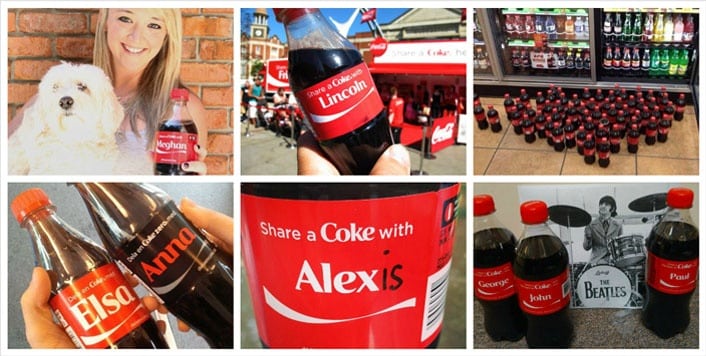
Your Complete 2022 Guide to User-Generated Content
Last Updated on September 23, 2022 by Valerie Jennings
An Updated 2022 Guide to User-Generated Content
User-generated content is original, brand-specific content created and published by customers rather than the company itself. It is typically in the form of photos, videos, testimonials or reviews, blog posts, videos and everything in between. It is a valuable marketing tool as 92% of consumers are more likely to trust a recommendation from another person over branded content, according to the Nielsen Consumer Trust Index. Brand authenticity can help set your brand apart from the competition in this hyper-connected and digital world. To help you make the most of your user-generated content (UGC), we have created a guide that includes how to acquire it, why it works, creative trends and how you can incorporate it into your marketing strategy.
Where Does UGC Come From?
- Customers are usually the primary source of UGC. This can either occur organically or as a result of your employed campaign.
- Brand loyalists are those who are the most enthusiastic about your business. It’s important to share content from various users to create a trustworthy and dependable brand image that resonates with a larger audience.
- Employees are also just as influential to the brand and online marketing. Content could be employees in action packing orders or a snippet of them explaining why they enjoy working for your company.
Why Does UGC Work?
When you consider that 86% of millennials and 68% of social media users between the ages of 18 and 24 take into account information shared on social media when they make a purchasing decision, it’s no wonder why UGC is successful. Here are a few reasons why brands are turning to their audiences rather than creating their ads:
- It creates a sense of community: It puts the customers front and center, which helps blend the consumers and the brand into one community. When other consumers see the content, they can also feel like they belong to something.
- It establishes trust: Hardly anyone would purchase a product or service from a company they don’t trust. By incorporating UGC into your marketing assets, you can establish trust with potential customers based on others’ experiences while also engaging current ones.
- It is a cost-effective method: Typically, consumers produce this content without a fee. Their purpose could be to share their experience with others, find like-minded individuals or enter to win a specific promotion. In comparison, influencer-generated content involves paying influencers whose interests, values and audiences align with those of the brands to promote their products or services. Overall, UGC is significantly cheaper than influencer-generated content and other advertising methods such as commercials or digital ad slots.
- It produces high ROI: According to Comscore, brand engagements rise by 28% when consumers see a mixture of UGC and professional marketing content. The professionally-produced content resulted in a better understanding of the overall message, while UGC is more successful at producing emotional intensity and relatability.
- It benefits SEO efforts: UGC helps build greater context and content, which search engines such as Google prefer. It helps keep new content funneling in without having to dedicate in-house resources to the creation while still having regular new content that resonates with your consumers.
Examples of Effective UGC Use
Brands large and small utilize UGC to grow brand awareness and online presence. Some popular brands include Coca-Cola, Starbucks, Chobani, Heineken, Target and Burberry. Coca-Cola launched the “Share a Coke” campaign and encouraged consumers to share photos with the customized cans and bottles adorning names, nicknames and personalized messages. In addition, Coca-Cola opened up its social channels for additional name submissions, which many hopped on to vote. There was an option to create virtual cokes with another 62,208 created and over 56,000 digital shares. The company attributes the campaign to a 2% increase in U.S. sales after over a decade of declining revenues.
(Source: https://www.audienceview.com/library/share-a-coke/)
Another great example is the White Cup Content by Starbucks. The coffee giant asked customers across the country to doodle on their Starbucks cups and submit photos as entries. The incentive for user submission was the winning entry would be the template for a new limited-edition cup. Nearly 4,000 customers submitted entries in a three-week span. This campaign successfully helped the company earn publicity and express its value in customer feedback.
(Source: https://stories.starbucks.com/stories/2014/starbucks-announces-the-winner-of-its-white-cup-contest/)
Top UGC Advertising Creative Trends
Recently, Instagram announced its latest algorithm change to focus on prioritizing media by content creators like influencers. This update means that original work will be prioritized in the feed over reposted or reshared content, making UGC even more powerful for brands. According to Consumer Acquisition, UGC ads outperform conventional ads on the same topic by 20% to 50%. Shared interests influence people over popularity, so content from all users resonates with fellow consumers. Here are a few of the top UGC advertising creative trends:
- Testimonials from real users, influencers or relayed via actors.
- Third-person and POV, including video of the consumer using the product or service.
- Tips and quizzes involving actors using direct address to share benefits and perks associated with your brand.
- Social connection by highlighting communication in or about the product.
- Commentary that provides casual real-time reactions and perspectives.
Ways to Get Customers to Create UGC
The initial step involves building an engaged audience through content creation on social media and blogs. Social media management will also help boost engagement when you like or comment on users’ content. Once you have an audience, there are a few methods you can implement to start collecting content, including:
- Promote an incentive for content submissions, such as a free product, gift card, discount promo code, online features or other giveaway items related to your brand.
- Create a call to action for your customers during different parts of their buying journey. Once they make a purchase, encourage them to share using custom hashtags. Once they receive their product or service, offer a discount on future purchases. After they get the results from your brand, follow up and ask them to share their experience. This will help generate various content from all areas of user experience and keep you top-of-mind with current customers after the initial purchase.
- Ask questions on social channels, allowing users to tell you about their experiences and how they interact with your brand.
Tips for Incorporating UGC Into Your Marketing
- Determine your campaign’s goal: Your campaign’s purpose will influence how you implement the content. If you want to increase brand awareness, try promoting a specific hashtag. If you want to boost website conversions, try collecting customer reviews from previous or current customers. If your goal is to build brand trust, track keywords or phrases associated with your brand and compare them to what consumers say.
- Let your audience know what you are after: More than half of consumers wish that brands would tell them what type of content to create and share, while only 16% of brands have a strategy for UGC. Start by considering your brand’s persona and develop a clear objective for consumers.
- Create a system to collect content: It could be as simple as a hashtag that you can scour for the right content or encourage customers to submit content through a portal. There are also social listening tools like Agorapulse available that help you easily monitor social conversations about your brand, competition and space. You can even respond quickly to urgent conversations regarding your brand and take action with retweets, replies, direct messages and more. No matter what tool you use, make sure to acquire the necessary permissions before sharing any content.
- Collaborate and focus on the community you are creating: UGC is great for sparking engagement in the online community. Answer questions, give recognition, be present during new product or service launches and show the personality behind your brand.
- Measure your efforts: Like other marketing initiatives, you should be evaluating your strategy. The top key performance indicators regarding UGC include views (the number of visitors that saw the asset), interactions (a measure of overall action taken from the asset, such as clicks) and engagement rate (a broad measure of an asset’s ability to generate interest). Additionally, website visits and hashtag use can gauge your social channels’ brand awareness. By measuring differences over time, you can understand what resonates with your current and ideal audiences.
We Can Help
User-generated content is just one way to propel your business forward through social media. Our agency has been ahead of social media trends since its beginning in 2003. We strategically develop customized and scalable programs for large and small clients to hit tangible revenue goals, increase new contacts and generate leads.
We develop a unique brand strategy involving multi-channel strategy, editorial planning, copywriting, creative production, channel publishing and reporting. Clients usually see rapid results within 60 days, increasing website leads. Additionally, after 12 months, clients are ready to mature their programs, grow sales goals, test new platforms and expand budgets. To learn more about our services and request a quote, click here or call 816-221-1040.



